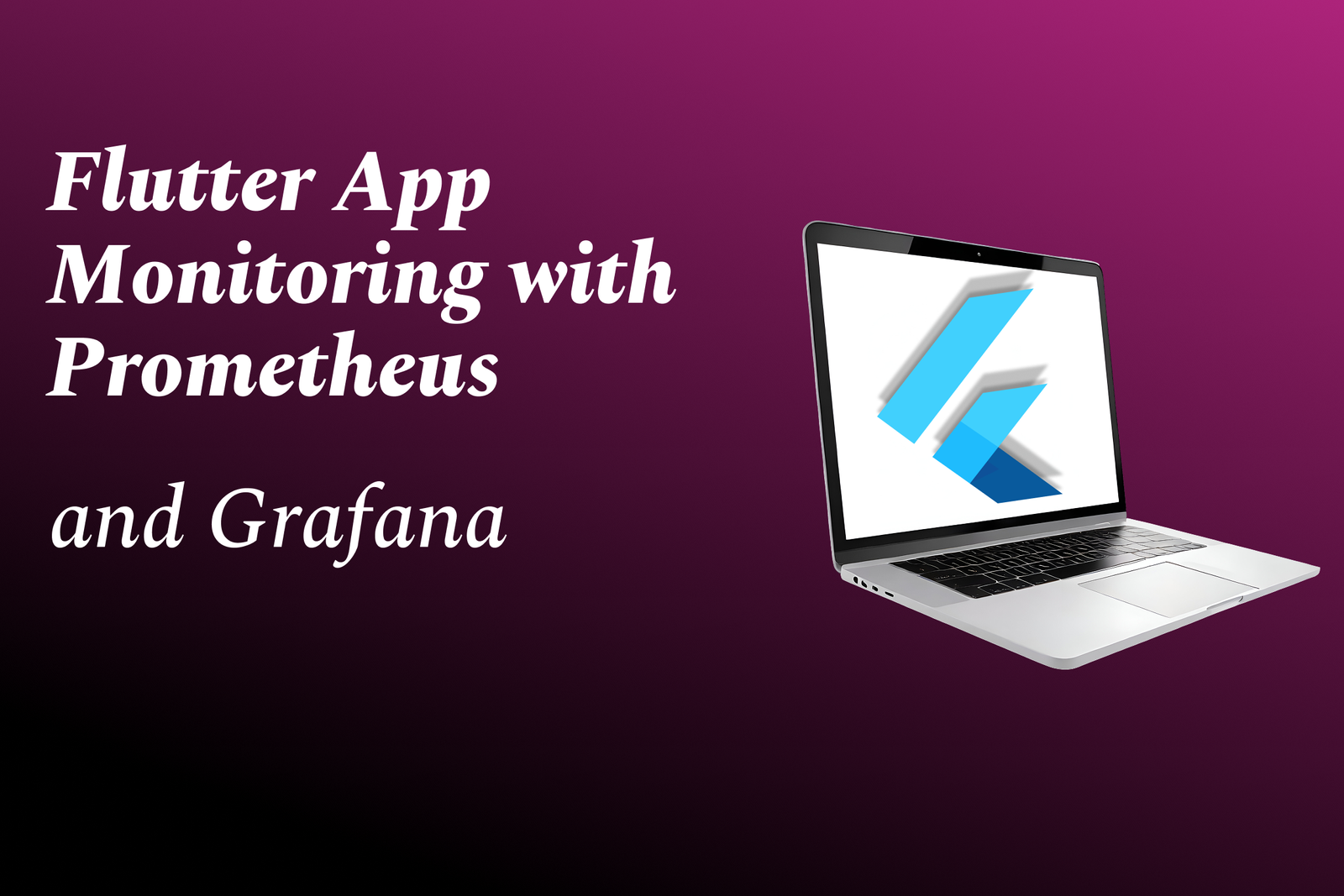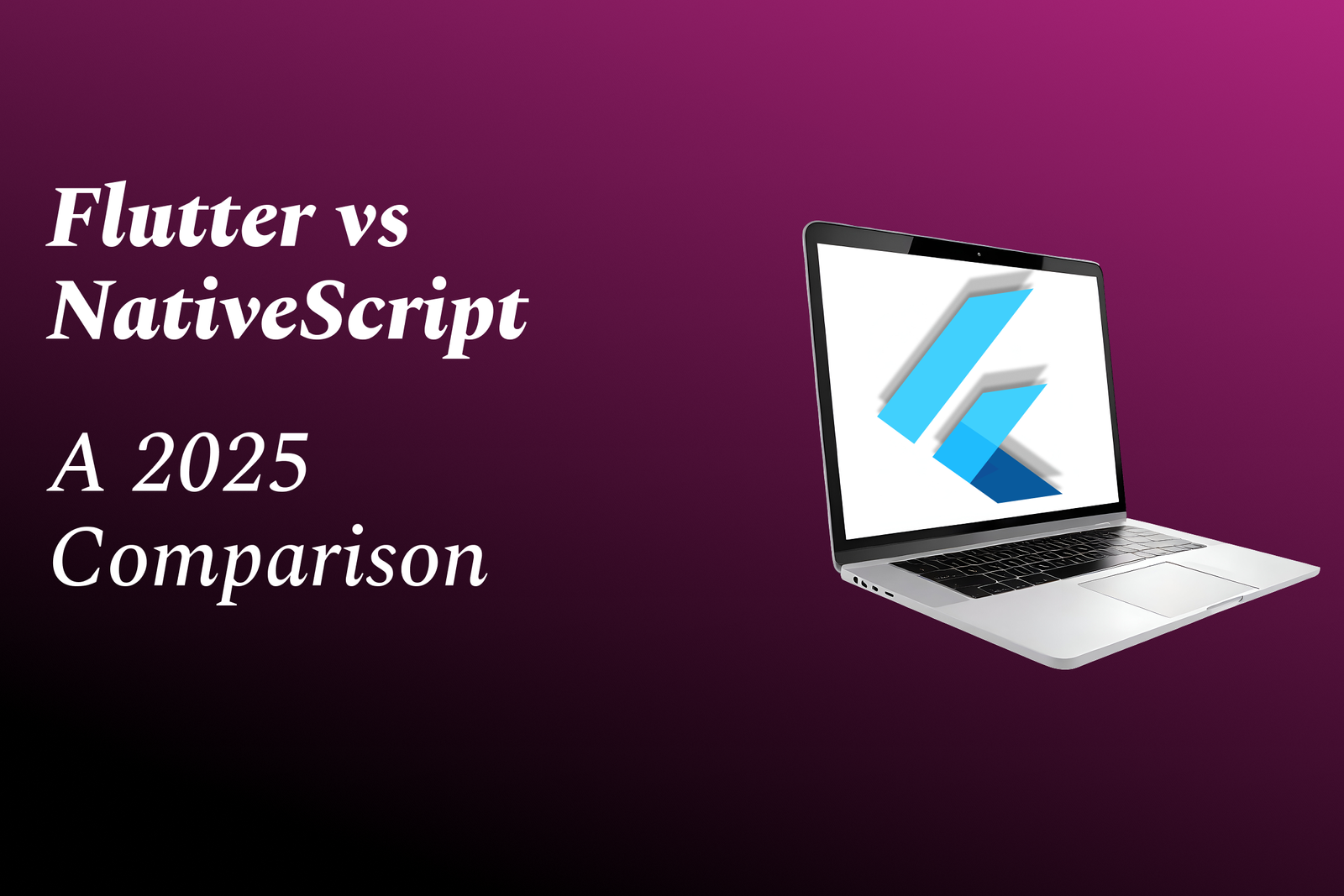Debugging Dart Null Safety Issues In Flutter
Debugging Dart null safety issues in Flutter means finding and fixing places where nullable values are used incorrectly so they cause runtime crashes or unexpected behavior: Dart’s null safety makes most null-related errors detectable at compile time, but problems still occur when migrating legacy code, using third‑party packages, misusing `late` or the `!` operator, or encountering async timing bugs. Effective debugging uses the Dart analyzer and IDE hints, reads stack traces and runtime error messages, adds defensive checks or null‑aware operators (`?`, `?.`, `??`), and replaces unsafe force-unwrapping with proper initialization or null handling to restore predictable, crash‑free behavior.
Debugging Dart Null Safety Issues In Flutter
Debugging Dart null safety issues in Flutter is essential because it helps turn compiler guarantees into real-world app stability: by locating and fixing misuse of nullable values (for example improper use of late, the ! operator, async timing bugs, or incompatible third‑party packages) you prevent runtime crashes and unpredictable behavior. Leveraging the Dart analyzer, IDE hints, stack traces and null‑aware operators (?., ??) makes these problems easier to spot and resolve, yielding more reliable code, smoother user experiences and simpler maintenance. Mastering these debugging practices—something we emphasize at JustAcademy—speeds safe migration to null safety and boosts confidence in production apps.
To Download Our Brochure: **https://www.justacademy.co/download-brochure-for-free
**
Message us for more information: **https://api.whatsapp.com/send?phone=919987184296
**
Debugging Dart null safety issues in Flutter is essential because it helps turn compiler guarantees into real world app stability: by locating and fixing misuse of nullable values (for example improper use of late, the ! operator, async timing bugs, or incompatible third‑party packages) you prevent runtime crashes and unpredictable behavior. Leveraging the Dart analyzer, IDE hints, stack traces and null‑aware operators (?., ??) makes these problems easier to spot and resolve, yielding more reliable code, smoother user experiences and simpler maintenance. Mastering these debugging practices—something we emphasize at JustAcademy—speeds safe migration to null safety and boosts confidence in production apps.
Course Overview
This concise JustAcademy course teaches practical techniques to identify and fix Dart null‑safety issues in Flutter apps—covering analyzer diagnostics, null‑aware operators, late/init handling, migration strategies, third‑party package problems, and runtime debugging with real project exercises.
Course Description
JustAcademy’s “Debugging Dart Null Safety Issues in Flutter” is a hands‑on course that teaches Flutter developers how to diagnose and resolve null‑safety problems using analyzer diagnostics, null‑aware operators, late/required handling, migration strategies, and runtime debugging techniques. Through real‑time project exercises and practical examples, participants learn to fix common pitfalls, handle third‑party package issues, and build robust, null‑safe Flutter apps ready for certification.
Key Features
1 - Comprehensive Tool Coverage: Provides hands-on training with a range of industry-standard testing tools, including Selenium, JIRA, LoadRunner, and TestRail.
2) Practical Exercises: Features real-world exercises and case studies to apply tools in various testing scenarios.
3) Interactive Learning: Includes interactive sessions with industry experts for personalized feedback and guidance.
4) Detailed Tutorials: Offers extensive tutorials and documentation on tool functionalities and best practices.
5) Advanced Techniques: Covers both fundamental and advanced techniques for using testing tools effectively.
6) Data Visualization: Integrates tools for visualizing test metrics and results, enhancing data interpretation and decision-making.
7) Tool Integration: Teaches how to integrate testing tools into the software development lifecycle for streamlined workflows.
8) Project-Based Learning: Focuses on project-based learning to build practical skills and create a portfolio of completed tasks.
9) Career Support: Provides resources and support for applying learned skills to real-world job scenarios, including resume building and interview preparation.
10) Up-to-Date Content: Ensures that course materials reflect the latest industry standards and tool updates.
Benefits of taking our course
Functional Tools
1 - Dart SDK and dart migrate
Dart SDK is the foundation for compiling, analyzing, and running null safe code and the course uses it to demonstrate language level behaviors.
The dart migrate tool provides an interactive migration assistant that proposes type changes and edits; students practice accepting, tweaking, and testing those changes.
Hands on labs show how to run the migration on sample apps, resolve conflicts, and understand why the tool suggests specific non nullable types.
JustAcademy instructors guide learners through best practices for staging migrations and verifying application stability after dart migrate edits.
Students leave able to run and evaluate migrations confidently in their own projects and enterprise codebases.
2) Dart Analyzer and static analysis diagnostics
Dart Analyzer surfaces null safety issues, strong mode errors, and potential runtime null dereferences as IDE warnings and errors.
The course trains students to interpret analyzer codes, filter rules, and act on diagnostics rather than ignoring them.
Learners configure analysis_options.yaml to adopt flutter_lints or custom rule sets and practice fixing the most common null related hints.
Exercises include reading complex diagnostic traces, locating root causes, and creating reproducible fixes enforced by the analyzer.
By course end students can tune analyzer settings for teams and integrate checks into their development workflow.
3) Flutter DevTools (Inspector, Timeline, Memory)
Flutter DevTools offers a visual widget inspector, timeline profiling, and memory heap snapshots that help trace null related UI failures.
Students use the inspector to inspect runtime widget trees, examine property values, and pinpoint where nulls propagate into UI widgets.
Timeline and performance tools reveal frame drops and build cycles that may correlate with null logic paths or late initialization bugs.
Memory snapshots help identify lingering references or unexpected null states due to lifecycle mismanagement.
Hands on labs teach navigating DevTools, capturing traces, and correlating UI errors with code locations and race conditions.
4) IDE Debuggers in VS Code and Android Studio
Integrated debuggers let students set breakpoints, step through code, inspect variables, and evaluate expressions to observe null propagation.
Training covers conditional and exception breakpoints that trigger precisely when nulls appear, minimizing trial and error debugging.
Learners practice watch expressions, inline variable views, and immediate evaluation to test fixes interactively during sessions.
Instructors demonstrate remote debugging on devices and emulators so students can reproduce device specific null behaviors.
These debugger skills are reinforced with real time labs that mirror employer debugging expectations.
5) Flutter Inspector and Widget Tree Diagnostics
The widget inspector visually exposes widget relationships, properties, and state objects that often reveal null misuse in builds.
Course labs teach how to select failing widgets, inspect constructor arguments, and trace which nullable values reached the widget.
Students learn to use the “Select Widget Mode” during runtime to map UI anomalies back to exact source lines.
Exercises include diagnosing missing data rendering and safely guarding widget fields with null aware patterns.
This tool focused practice improves students’ ability to fix UI null exceptions quickly and with confidence.
6) Hot Reload, Hot Restart and Stateful Reload workflows
Hot reload accelerates iteration while fixing null safety bugs by preserving app state and letting students see immediate effects.
Training emphasizes when to use hot reload versus hot restart to reproduce initialization related null issues correctly.
Labs demonstrate pitfalls where hot reload masks an initialization bug, teaching disciplined use of restarts during migration.
JustAcademy shows students how to combine reloads with breakpoints and DevTools captures for faster root cause analysis.
Mastering these workflows reduces debugging time during both development and migration phases.
7) Crash reporting and observability: Firebase Crashlytics and Sentry
Crashlytics and Sentry collect real world crash reports and aggregated stack traces that expose null safety regressions users encounter.
Course modules cover integrating these SDKs, interpreting grouped errors, and using breadcrumbs to reconstruct failure paths.
Students practice symbolication, filtering by release, and mapping logs to source to prioritize fixes in production.
Instructors show how to create automated alerts and link crash events to reproduce steps for efficient troubleshooting.
Hands on sessions ensure students can connect production telemetry to local debugging efforts.
8) Logging frameworks and structured logs (logger, log, platform channels)
Structured logging helps students record contextual state leading up to null exceptions without invasive debugging.
The course teaches log levels, correlation IDs, and best practices for logging nullable values safely in UI and business logic layers.
Students implement logger packages, route logs to console or remote sinks, and learn how to redact sensitive data while keeping actionable context.
Exercises include crafting minimal log statements that make reproducing null flows straightforward during postmortems.
These logging skills complement tracing tools and improve time to resolution for null safety incidents.
9) Unit, Widget, and Integration Testing tools (flutter_test, mockito, integration_test)
Tests let students reproduce null safety edge cases deterministically and prevent regressions during migration.
Training covers writing focused unit tests for null inputs, widget tests for missing data rendering, and integration tests for lifecycle timing.
Mocking libraries such as mockito enable simulating absent services or null responses to validate defensive code paths.
Course assignments require students to add tests that fail before fixes and pass after applying null aware changes.
By the end, learners can design test suites that protect teams from introducing null related regressions.
10) CI/CD pipelines and automated analysis (GitHub Actions, GitLab CI)
CI pipelines enforce analyzer checks, dart test runs, and flutter analyze steps so null safety regressions are caught before merge.
Students configure workflow files that run dart migrate checks and fail builds on unresolved analyzer errors.
Practical labs show pre merge gates, auto format enforcement, and integration of crash reporting or coverage uploads.
JustAcademy demonstrates how to use PR templates and CI comments to guide reviewers on null safety changes.
This training teaches students to embed null safety quality gates into team workflows for consistent results.
11 - Dependency and package analysis tools (dart pub outdated, pubviz)
Identifying packages that lack sound null safety is essential; dart pub outdated highlights which packages are non migrated.
Students use pubviz and dependency graphs to visualize where un migrated transitive dependencies force workarounds.
Coursework includes strategies to replace, fork, or coordinate updates with package maintainers to advance migration.
Hands on labs cover version pinning, constraint resolution, and creating minimal reproducible examples for upstream issues.
These capabilities equip learners to manage dependency risk during enterprise migrations.
12) Automated fixes and code transforms (dart fix, quick fixes in IDE)
dart fix and IDE quick fixes apply common null safety transformations automatically, saving time on boilerplate edits.
The course teaches when to accept automated fixes and when to perform careful manual review to avoid logic regressions.
Students practice running dart fix dry run to preview changes and integrate fixes into code review workflows.
Instructors emphasize combining automated changes with targeted tests to validate behavioral equivalence.
This balance of automation and oversight speeds migration while preserving application correctness.
13) Stack trace analysis and symbolication tools
Interpreting stack traces is a core skill for mapping runtime null exceptions back to source lines and call chains.
Training includes parsing obfuscated traces, using source maps, and applying deobfuscation tools for release builds.
Students practice reconstructing execution paths from traces and correlating them with logging and telemetry data.
In class exercises show how to triage crashes by frequency and impact, prioritizing fixes that reduce user visible failures.
These practices make production debugging of null issues systematic and data driven.
14) Memory profiling and heap snapshot analysis
Memory profilers reveal object lifetimes and unexpected null states caused by improper disposal or retained references.
Course labs guide students through heap snapshots, allocation traces, and finding zombie objects that contribute to null logic.
Instruction links lifecycle mismanagement patterns with null exceptions and shows corrective patterns for disposal and init.
Students learn to reproduce leak related nulls and validate fixes with repeated profiling runs.
This knowledge helps prevent subtle null problems that only manifest under heavy load or long runtimes.
15) Code search, refactoring, and cross repo analysis tools
Powerful code search (IDE find usages, ripgrep, Sourcegraph) helps locate nullable API usage and hotspots across large codebases.
Training covers pattern searches for “?.”, “!”, and “late” usages and bulk safe refactoring strategies to reduce manual effort.
Learners use refactoring tools to rename, extract, and introduce null safe helper functions consistently across modules.
Hands on tasks include cross repo change planning and creating migration checklists to keep teams synchronized.
These capabilities accelerate coordinated migrations in multi repo organizations.
16) Linting and custom analyzer rules (flutter_lints, custom plugins)
Lints enforce best practices such as avoiding force unwrapping and preferring null aware operators where appropriate.
The course shows how to adopt community rule sets and author small custom rules to catch team specific anti patterns.
Students practice iterating on rules, running bulk fixes, and training teams to interpret lint violations constructively.
JustAcademy emphasizes embedding lint enforcement into CI and developer feedback loops for sustained quality.
Adopting strict linting reduces the incidence of preventable null safety bugs over time.
17) Version control workflows and pull request review tools (git, GitHub PRs)
Robust git workflows and disciplined PR review catch accidental reintroductions of nullable regressions during collaboration.
Students learn to create migration branches, craft clear PRs describing null safety rationale, and use codeowners for targeted reviews.
Training covers using diff views to spot introduced “!” operators or removed null checks that may be risky.
Practice reviews in class build reviewer instincts to ask the right null safety questions and request minimal, test backed changes.
Proficient VCS habits reduce merge time surprises and increase reviewer confidence in migration commits.
18) Remote pairing and interactive lab platforms (Live Share, Codespaces, Gitpod)
Real time pairing tools allow instructors to demonstrate fixes and students to follow along in their own environment simultaneously.
JustAcademy uses these platforms for live debugging sessions where instructors can highlight null flows and propose fixes collaboratively.
Students gain hands on experience while receiving immediate feedback and can replay sessions for later review.
Labs are structured as reproducible workspaces so learners can continue practicing after the live session ends.
This interactive approach accelerates learning and mirrors industry paired debugging practices.
19) API mocking and service virtualization (mocktail, http_mock_adapter, WireMock)
Mocking backend responses lets students reproduce null responses, absent payload fields, and malformed data deterministically.
Labs cover structuring mock handlers, simulating latency or empty bodies, and validating app behavior against unexpected nulls.
JustAcademy emphasizes isolating network variability during migration so fixes aren’t masked by intermittent API behavior.
20) Feature flags and gradual rollouts (LaunchDarkly, Firebase Remote Config)
Feature flags enable rolling out null safety changes incrementally to subsets of users and quickly reverting when regressions occur.
Course modules show how to gate migration changes, monitor for increased error rates, and run targeted experiments before full release.
Students practice creating safe kill switches and telemetry hooks to measure impact of null related changes in production.
21 - Distributed tracing and correlation (OpenTelemetry, Zipkin)
Tracing links distributed requests and exposes where nulls propagate across service boundaries or async flows.
Students instrument key paths, attach correlation IDs, and use traces to pinpoint the origin of null valued payloads.
Training demonstrates combining traces with logs and metrics for a complete failure picture during migrations.
22) Automated regression detection and visual testing (Percy, golden tests)
Visual regression tests and golden files detect UI changes caused by null handling differences or missing data rendering.
Hands on labs teach writing golden tests for critical screens and adding them to CI so accidental visual null regressions fail builds.
This technique reduces user facing surprises when default values or placeholders change during migration.
23) Contract and schema testing (Pact, JSON Schema, GraphQL codegen)
Contract tests ensure backend schemas won’t introduce unexpected nullable fields that break clients.
Students learn to generate clients from schemas, validate responses against contracts, and fail builds on incompatible changes.
JustAcademy trains teams to coordinate schema evolution proactively to minimize null related runtime surprises.
24) Code generation tooling (build_runner, json_serializable, freezed)
Code generators reduce manual nullable boilerplate and produce type safe models that respect null safety contracts.
Course examples illustrate generating copyWith, union types, and JSON serialization with null aware defaults.
Learners practice integrating generation into builds and handling migration nuances when regenerating models.
25) State management patterns that reduce null errors (Riverpod, Bloc, Provider)
Robust state patterns centralize initialization and make absent data states explicit, reducing ad hoc null checks scattered across widgets.
Training contrasts eager vs lazy initialization, immutable state shapes, and using sealed states to represent loading/empty/error scenarios.
Hands on labs refactor fragile state into safer patterns that make null safety reasoning easier.
26) Mutation testing and test quality assurance (stryker like tools)
Mutation testing evaluates whether tests catch faults introduced by aggressive null changes or removed guards.
Students run mutation suites to identify weak tests that would allow dangerous “!” uses or missing checks to slip through.
Improving test quality based on mutation results strengthens confidence during migration.
27) Security and static analysis (Snyk, Dependabot, CodeQL)
Security scanners and dependency bots flag vulnerable or abandoned packages that might block null safety adoption.
Coursework covers integrating automated dependency updates and SAST rules that also check for risky force unwrapping patterns.
Students learn to balance migration speed with dependency hygiene and security obligations.
28) Performance benchmarking and load testing (flutter_driver, Locust, k6)
Load and benchmark tests reveal concurrency or timing related null races that only appear under stress.
Labs include writing scenarios that simulate heavy startup or parallel flows to catch race conditions causing null access.
JustAcademy shows how to triage and fix these timing sensitive issues with robust initialization and synchronization patterns.
29) Release management and canary pipelines (staged rollouts, phased releases)
Structured release plans split migration into discoverable milestones, with post deploy monitoring gates at each stage.
Students craft release checklists, rollback plans, and acceptance criteria tied to crash and error budgets.
This discipline reduces blast radius when migration changes interact unexpectedly with user workloads.
30) Community engagement and upstream contribution workflows
When dependencies lack null safety, contributing patches or opening issues accelerates ecosystem migration.
Course modules guide students through creating minimal reproducible examples, submitting PRs, and maintaining forks responsibly.
JustAcademy encourages community collaboration as a strategic lever to remove migration blockers.
31 - Knowledge capture: playbooks, migration docs, and runbooks
Written playbooks document migration steps, common pitfalls, and emergency mitigation patterns for teams to follow consistently.
Students build runbooks for common null safety incidents (e.g., null pointer in release) including reproduction, fix, and rollback steps.
Having institutionalized knowledge shortens remediation time and spreads expertise beyond single contributors.
32) Sample apps, migration templates, and reproducible labs
Curated starter projects that demonstrate incremental migration patterns give learners practical blueprints to copy into real projects.
JustAcademy provides reproducible labs that mimic legacy app layouts, third party constraints, and staged migration paths.
These templates help teams bootstrap their own migrations with proven patterns and tests already in place.
33) Mentorship, code reviews, and hands on workshops
Guided code reviews and pairing sessions help catch subtle null safety logic flaws that automated tools may miss.
Workshops simulate real migration sprints where instructors and peers review PRs, suggest safer patterns, and enforce test coverage.
This human feedback loop accelerates developer upskilling and ensures organizational adoption of safe practices.
If you want, expand any of these into a full course module outline, lab exercises, or a checklist tailored for enterprise migrations.
Browse our course links : https://www.justacademy.in/all-courses
To Join our FREE DEMO Session: https://www.justacademy.in/register-for-course-demo
This information is sourced from JustAcademy
Contact Info:
Roshan Chaturvedi
Message us on Whatsapp: https://api.whatsapp.com/send?phone=919987184296
**Email id: mailto:info@justacademy.co
**
https://www.justacademy.co/blog-detail/gamification-in-flutter:-engaging-your-users
https://www.justacademy.co/blog-detail/flutter-impeller-vs.-skia:-a-deep-dive-into-the-new-rendering-engine
https://www.justacademy.co/blog-detail/flutter-music-streaming-ui:-a-clone-tutorial
https://www.justacademy.co/blog-detail/starting-a-flutter-meetup:-a-community-builder's-guide
https://www.justacademy.co/blog-detail/flutter-buildcontext-explained-for-beginners
Step-by-Step Guide to Fixing Dart Null Safety Errors in Flutter (Debugging & Best Practices)
Fixing Dart Null Safety Errors in Flutter: Complete Debugging Guide & Best Practices
Flutter Null Safety: Step-by-Step Debugging & Error Fixes with Examples and Best Practices
Debugging Dart Null Safety in Flutter: Step-by-Step Fixes, Examples & Best Practices











